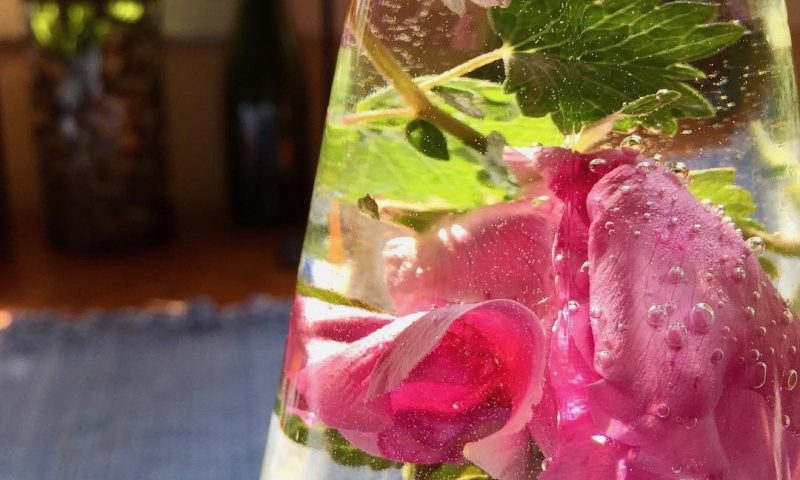For Summertime Heat ~
As the days heat up this season, look to cooling herbs and herbal preparations to chill out and keep cool.
The Energetics of Summer Heat
In herbal medicine, we often categorize herbs, conditions, people, and seasons by their “energetics,” such as hot, cold, dry, and damp. (I wrote an overview of energetics in the Summer 2017 issue.) It makes sense that summer would be associated with “heat.” The energetics of a season can exacerbate the energetics of a particular person or condition, especially if they’re similar. You probably know “cold people” who adore warm temps and dread winter and “hot people” who get agitated when the mercury rises past 70 degrees. Heat is traditionally associated with excessive and hyper body functions, redness, flushing, inflammation, feeling hot to the touch, agitation, anger, and frustration. Whether summer’s heat coincides with dampness or dryness will depend on your ecosystem, which can further exacerbate your own energetics. For example, my “hot damp” mom has a meltdown in our humid New England summers but does just fine at higher temps in the arid Southwest.
But in Traditional Chinese medicine, “summer heat” gets a category of energetics all its own beyond simple “heat.” Once temperatures reache a certain point, almost everyone’s energetics get overwhelmed by that heat. Sweltering summer bogs us down making us exhausted, overwhelmed, heavy, and irritable, especially mid-day. Elders and children tend to be particularly susceptible, especially if they don’t have access to air condition or a plunge into cool water. People who live in consistently hot climates have adapted to the heat by taking siestas and relying on cooling herbs.
Enter Cooling Herbs
Herbs and remedies that are energetically cooling (and often hydrating) help us cope better with rising temps and find relief from its irritating, exhausting effects.
First, consider the remedy format or delivery system. Now is not the time for a steaming hot bowl of broth, soup, or tea. Cooling herbal remedies are often cold to cool in temperature, water based, and sometimes sweet, tart, or sweet-tart in flavor. Think of honey/maple/sugar-vinegar/citrus blends like oxymels, switchel, or shrubs in cold fizzy water as well as lemonade, lime-ade, sweetened hibiscus tea, frozen Slushies, Popsicles, margaritas, gin and tonics, and mojitos.
As far as the herbs themselves go, our most energetically cooling and “refrigerant” herbs and foods tend to be to fall into a couple flavor categories.
- Sour: lemon, lime, lemon balm, lemongrass, lemon verbena, hibiscus, berries, sorrel (especially refreshing if sweetened lightly)
- Sweet: Korean licorice mint or anise hyssop (Agastache), fennel, fruit like peaches, peach leaf and twig, crabapple/apple twig, a little honey, sugar, or maple syrup
- Melon-y: watermelon, cucumber slices, cantaloupe, also meadowsweet, violet, and salad burnet have a hint of sweetness from their low levels of wintergreen-y methyl salicylate that’s amazing in infused cold water (tasting surprisingly like peach or melon rather than wintergreen)
- Minty: spearmint, apple mint, banana mint (peppermint might be too warming)
- Green: crispy mild lettuce, parsley, chickweed, violet leaf, miners lettuce, nettle (cook, puree, then freeze nettle to remove their peppery sting - great frozen in ice cube trays for. later use)
- Lightly Astringent: green or black tea, linden, rose-family herbs like rose blossoms and lady’s mantle (especially cooling if iced)
- Moistening: especially when it’s hot and dry, mucilaginous drinks made with marshmallow or oat served cold and lightly sweetened can be pleasantly refreshing and even more hydrating than water
Cooling Herbs & Recipes
Iced Tea
Iced Tea Recipe #1: This method is simple but requires pre-planning. Brew your tea as your normally would, pop it in the fridge til it cools, then serve over ice. Tea keeps in the fridge for one to two days.
Iced Tea Recipe #2: For those who forgot to plan ahead or prefer their tea freshly brewed (it’s tastier!), brew your tea at double-strength, then strain and pour over ice. Choose your vessel carefully because most will break when exposed simultaneously to the dramatic shifts in temperature of ice and hot water. Stainless steel is the safest. Solid tempered glass might hold up. Pour over in the sink, just in case. Do not do this with regular glass jars and pitchers nor ceramic.
Iced Tea Herbs: Green tea, black tea, lady’s mantle, hibiscus (classic sweetened in Mexico and Central America!), lemon, lemongrass, lemon balm, Korean licorice mint/anise hyssop, mint, violet leaf, marshmallow leaf
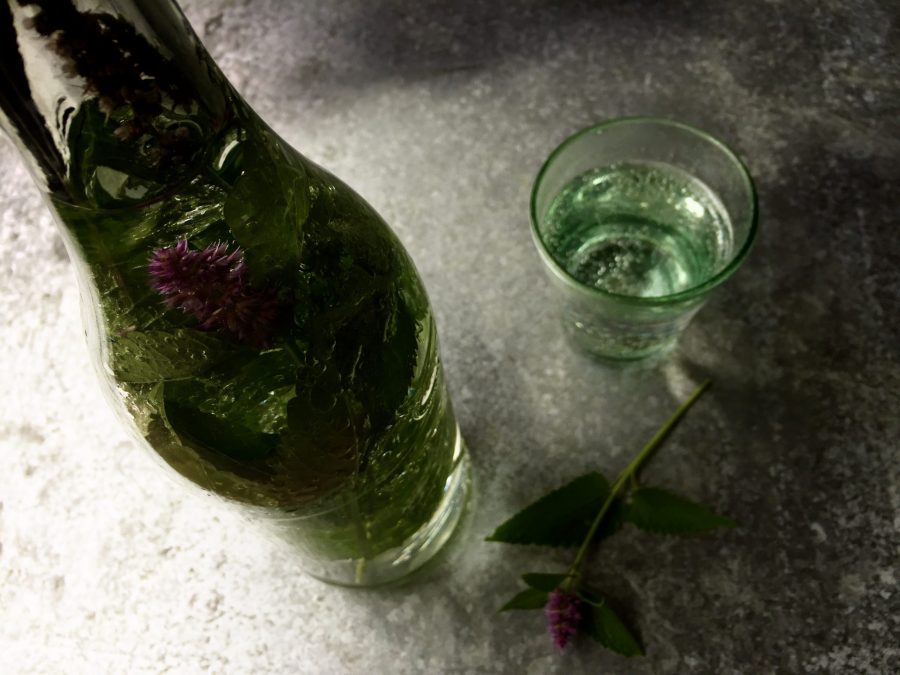
Cold-Infused Water, Seltzer & Soda
This is delightful with flavorful fresh herbs from the garden! Cold water makes a light extract primarily of an herb’s aromatics with a hint of sweet. It lacks the potency and diversity of constituents of a hot tea, but it’s also more refreshing. Simply add a few fresh sprigs of tasty herbs to cold water in a container that keeps them submerged and sip after 20 minutes or within the day. Lightly sweeten to make them more refreshing and hydrating.
Cold-Infused Water Herbs: roses (let them steep for several hours), meadowsweet, violet leaf, salad burnet, holy basil, mint, Korean licorice mint/anise hyssop, plus some flowers for beauty
Seltzer & Soda Herbs: lemongrass, lemon verbena (with vanilla extract, this tastes like lemon cake), Korean licorice mint/anise hyssop (with vanilla extract this tastes like root beer), mint, lime or lemon wedges, fennel fronds
Smoothies & Juices
Herbs plus fruit and/or ice tea make fabulous refreshing drinks! Add a handful of pleasant-tasting “green” herbs to your smoothies or juice plus a bit of your sour or sweet herbs.
Herbs to Juice and Blend: Parsley, violet leaf, nettle (steamed or blanched, then frozen), or chickweed help make a nice base for green drinks. Then add some flavorful herbs such as lemongrass (really yummy with pineapple, orange and/or carrot juice), apple mint (lovely with lime, greens, peaches or berries), or Korean licorice mint/anise hyssop/fennel (for sweet-licorice notes). Also consider using iced green or hibiscus tea in place of water… or really any iced herbal tea you’d like.
Herbal Ice Cubes and Pops:
Freezing pureed herbs, smoothies, juices, and brewed tea in ice cube trays or ice pop molds to add to drinks or suck on when the days get hot.
Herbs to Freeze: Sweetened (with sweetener or blended with sweet-tasting fruits) hibiscus, lemongrass, apple mint/spearmint, Korean licorice mint/anise hyssop/fennel, or cold-infused rose petals would be fabulous.
Perfect pairings to consider:
- hibiscus + berries
- lemongrass + pineapple + coconut milk
- mint + lime
- basil + berries
- lemon balm or lavender + lemonade
- green tea + lemon balm or lemon verbena
- watermelon + mint or basil
- peach fruit + peach twig or leaf tea
- holy basil + mint or green tea + honey
- pureed/steamed nettle ice cubes + strawberry + raspberry smoothie
- parsley +
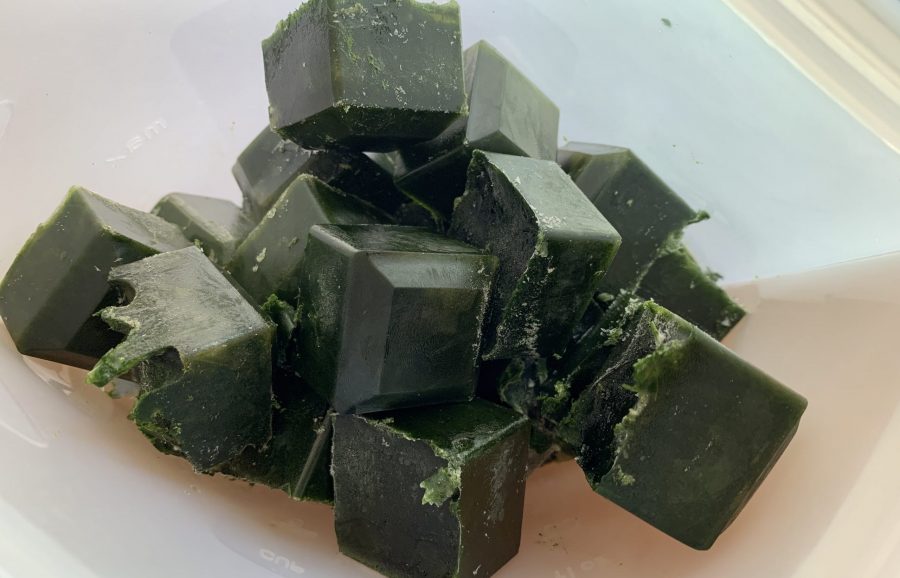 berry smoothies
berry smoothies
Herbal Spritz and Foot Baths
Plunging yourself in cool water provides immediate relief. Topical mini applications of cool water also help cool us off on hot days, a trick I learned from Portland herbalist Missy Rohs. On hot days she fills a tub with cool water and sprinkles in cooling herbs like rose petals, mint, anise hyssop, and/or violets, then kicks back in the backyard with her feet. You can also use iced tea or hydrosols of cooling herbs like lemon balm, mint, or roses in chilled spray bottles for a quick refresher.
Topical Cooling Herbs: Mint has a cooling tingly feeling on the skin and helps freshen your aroma. Roses cool and astringe while lifting and calming spirits. Lemon balm and green tea have antioxidant and anti-inflammatory as well as lightly astringing properties on the skin.
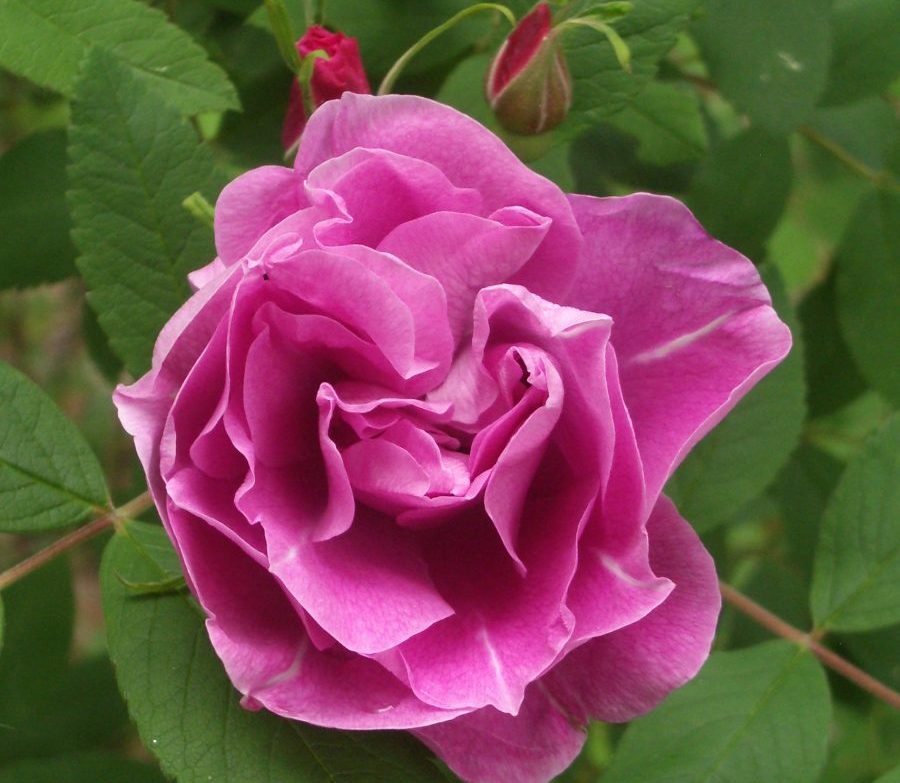
Key Cooling Herbs
Rose (Rosa spp.) petals and flower heads will have more aromatics and sweetness via cold infusions (in water, seltzer, honey, or glycerine) or hydrosol. These aromatics have a cooling effect on temperament and a brightening, calming effect on mood. I love adding a rugosa rose blossom to my glass water bottle in summer to help remind me to relax and stop and smell the roses. Roses’ astringent tannins help tighten and tone when applied topically.
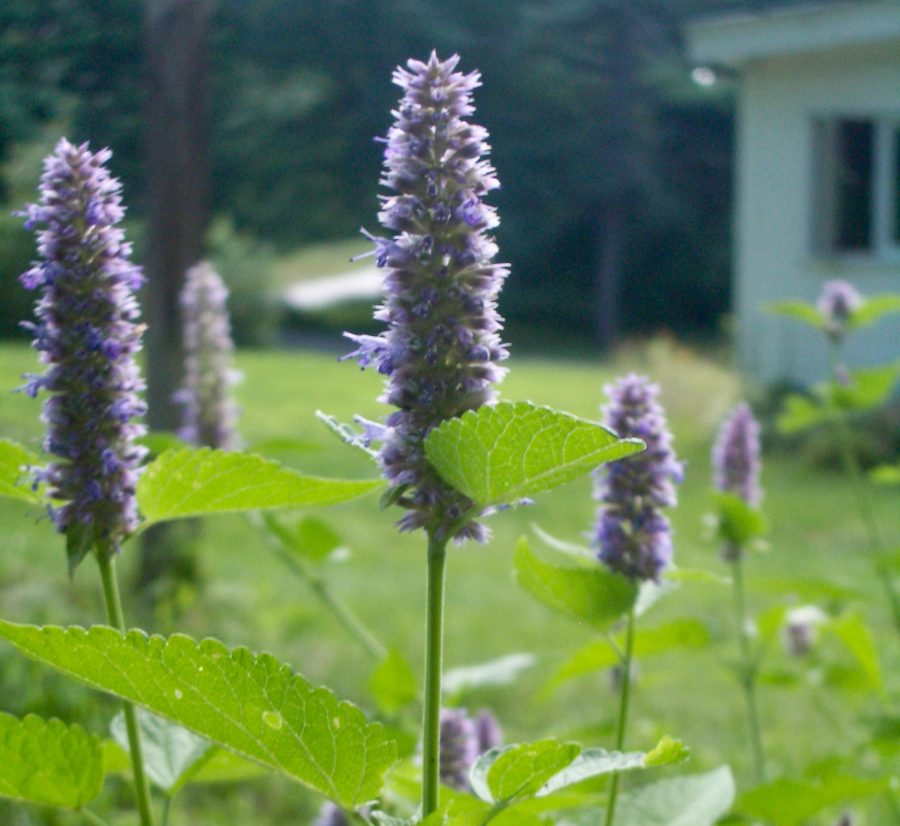
Agastache spp. such as Korean licorice mint and anise hyssop have flavors that vary between sharp minty-ness and sweet, soft honey-fennel. They’re in the mint family and like many of their familiars (basil, lemon balm, holy basil, self heal…) they’re rich in antioxidant and anti-inflammatory constituents that help cool inflammation and irritation. In traditional Asian herbal medicine, Korean licorice mint helps cool summer heat. Plus, they’re delicious! I particularly prefer those with the sweet honey-fennel flavor – you’ll have to smell and taste your specimen to confirm this – especially with a splash of vanilla extract. Vanilla gives brightens and softens Agastache with a root beer-like flavor that’s soooo good in seltzer for a naturally sweet sugar-free soda. Use the leaves snipped in salad or whole in fresh spring rolls, too. The pretty purple flowers taste good while decorating your glass or ice cubes.
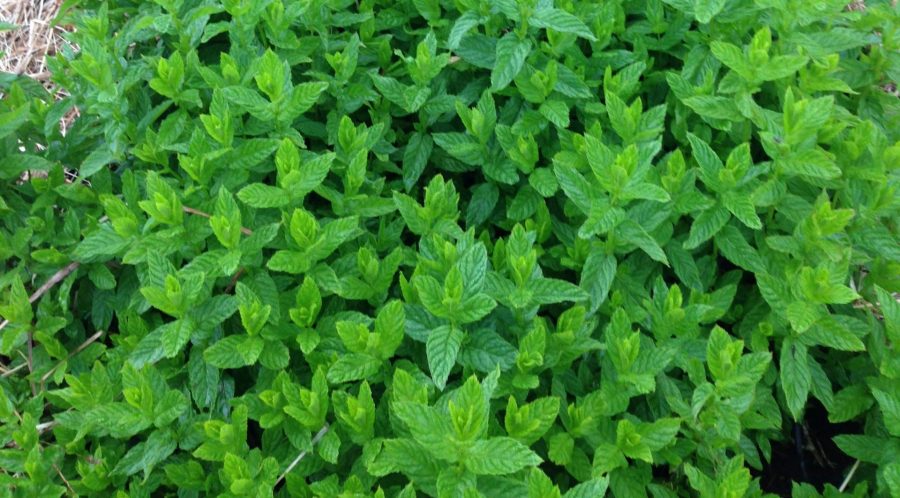
Mint (Mentha spp.) is classic in summer and hot climates for bright, cheery flavor and the cooling tingle it imparts. My favorites to chill out are spearmint or the soft, fuzzy apple mint. They taste great solo in seltzer and also blend well with lime, fruit, and various types of ethnic cuisine – Mexican, Indian, Middle-Eastern, Mediterranean, Southeast Asian, and Moroccan/North African. Use it both as a garnish and as iced tea or seltzer with these dishes. Mint is also wonderful applied topically via foot baths and spritzes. Additional mint-family herbs that provide their own unique flavors and help cool us off in summertime include culinary Genovese basil, cinnamon basil (great ice cream!), holy basil, Thai basil, lemon basil (you get the drift, any kind of basil), and lemon balm.
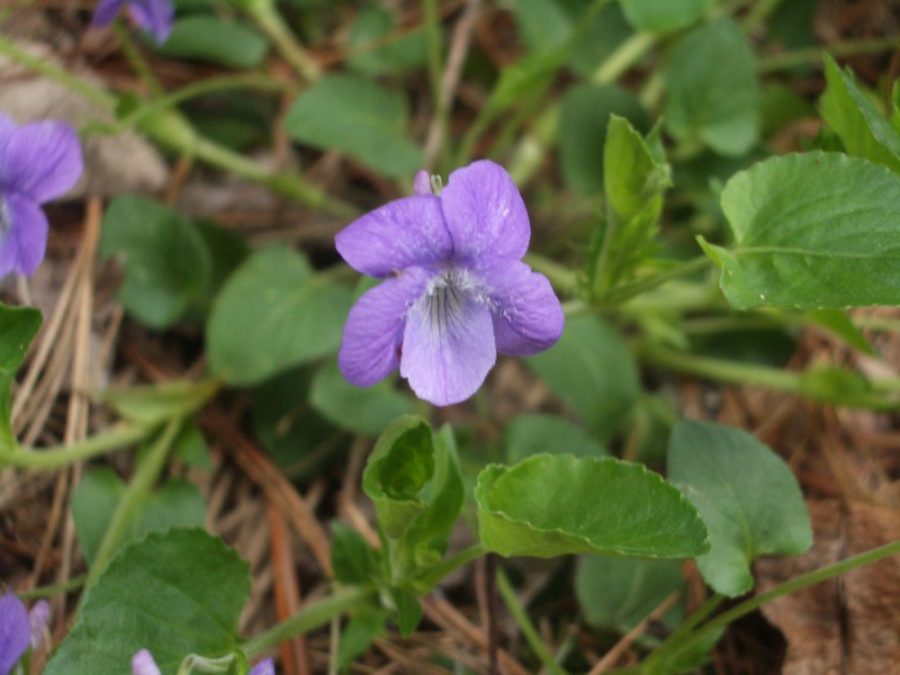
Violet (Viola spp.) leaf and flower bridge a couple cooling flavors and properties within herbal medicine. The leaves have a cheerful, bright “green” flavor amenable to salads, pesto, tea, and smoothies. The blue and white flowers are relaxing to gaze at and make a lovely garnish in tea blends, ice cubes, water bottles, etc. The most popular medicinal/edible varieties are common blue violet and its white counterpart (V. sororia), sweet violet (V. odorata), and heartease pansy flowers (V. tricolor). Violet also contains a tiny amount of the anti-inflammatory aromatic compound methyl salicylate, which in large amounts tastes like wintergreen but in small amounts imparts a light, sweet, melon/peach-like flavor.
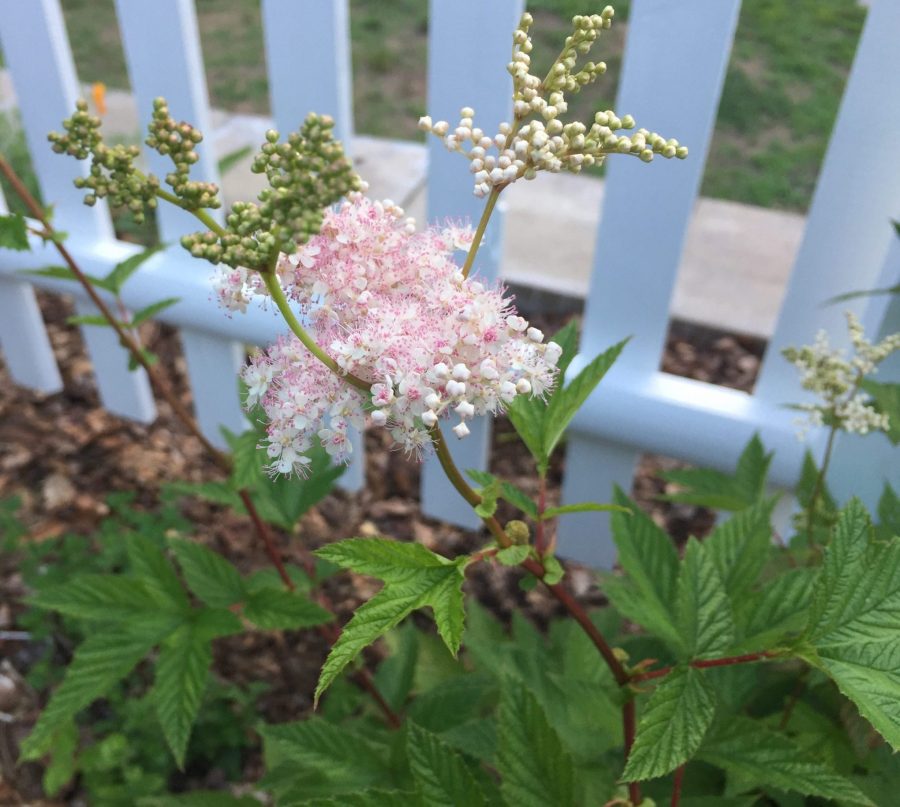
Meadowsweet (Filipendula ulmaria) and salad burnet (Sanguisorba minor) have this similar but slightly stronger flavor profile. All three of these herbs provide lovely background flavor to cold infused waters and seltzers, and they’re also nice finely minced in fruit salad, in smoothies, and in topical preparations.
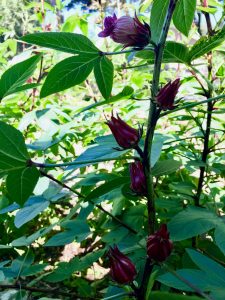
Hibiscus (Hibiscus sabdariffa) caught my eye while traveling in Guatemala and Mexico, where the plant grows abundantly and the flowers are enjoyed as cooling tea called “Jamaica” or “Rosa de Jamaica” pronounced ha-mike-ah. Most zinger and berry-flavored teas in the United States use it for its tart fruity flavor and deep red color. On its own, it tastes and looks like unsweetened cranberry juice. Sweetened and iced, it resembles (much healthier) Kool-Aid and is incredibly refreshing. You’ll can find dried hibiscus “flowers” easily in bulk herb suppliers even though technically we use the flower calyx. Herbalist Juliet Blankespoor teaches you how to grow this tropical herb on ChestnutHerbs.com. Hibiscus tea makes fantastic iced tea, cold infusion, syrup (to add to seltzer), ice cubes, ice pops, smoothies, etc. Other pleasant sour-tasting cooling herbs include lemongrass, lemon verbena, lemon, lime, and fresh lemon balm.
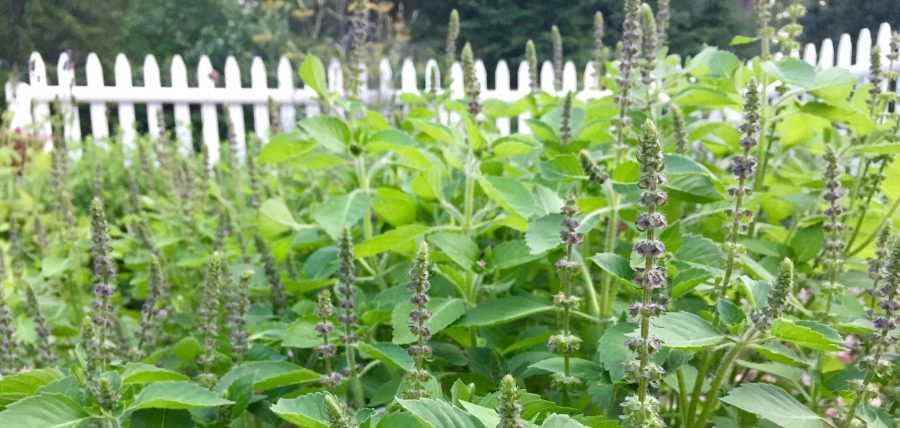
Herbal Energy Electrolyte Drink
Feel free to take this theme and play with your personal favorite herbs and flavors. Holy basil cools inflammation and irritability while uplifting the spirits and providing gentle energy and flavor. Green tea has similar benefits in addition to a little bit of caffeine. The honey and green tea’s astringency help ground and balance holy basil’s aromatics.
- 1 teaspoon dried holy basil
- 1 teaspoon jasmine green tea
- 1 tablespoon honey or to taste
- Pinch of sea salt
Steep the herbs for five minutes in hot water to make an iced tea. Strain. Add honey and sea salt. (Using method #1, start with 16 ounces of water then chill. Using method #2, steep in 8 ounces of water then pour over ice.) Note that if you drink this unsweetened on an empty stomach, both green tea and holy basil could cause hypoglycemia and stomach upset. A little sweetener also helps it act more like a refreshing electrolyte drink.
Listen & Learn
Listen to my HerbRally Podcast with fellow herbalist Missy Rohs (of Arctos School of Herbal and Botanical Studies in Portland, Oregon) as we chit chat about our favorite ways to use cooling herbs in summertime (recorded May 2019 during a flight delay from my PDX airport hotel room during my Grow Your Own Herbal Remedies book tour) - talk about turning lemons into sweet, cooling lemonade!! 😀
Clinical herbalist Maria Noël Groves sees clients and teaches classes at Wintergreen Botanicals Herbal Clinic & Education Center in Allenstown, New Hampshire.
The statements made on this blog have not been evaluated by the FDA and are not intended to diagnose, prescribe, recommend, treat, cure, or offer medical advice. Please see your health care practitioner for help regarding choices and to avoid herb-drug interactions.
The article originally appeared in Herb Quarterly magazine.

